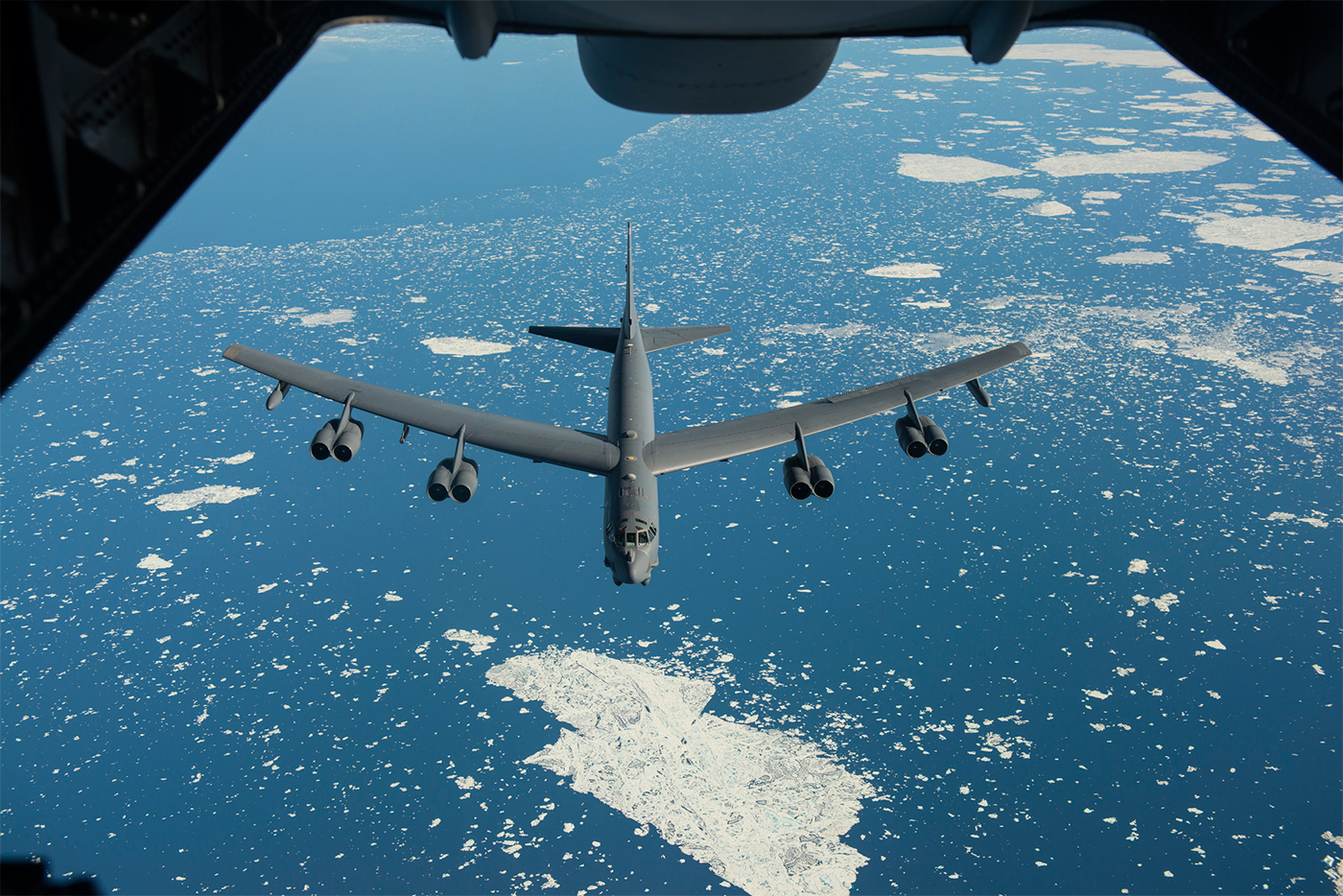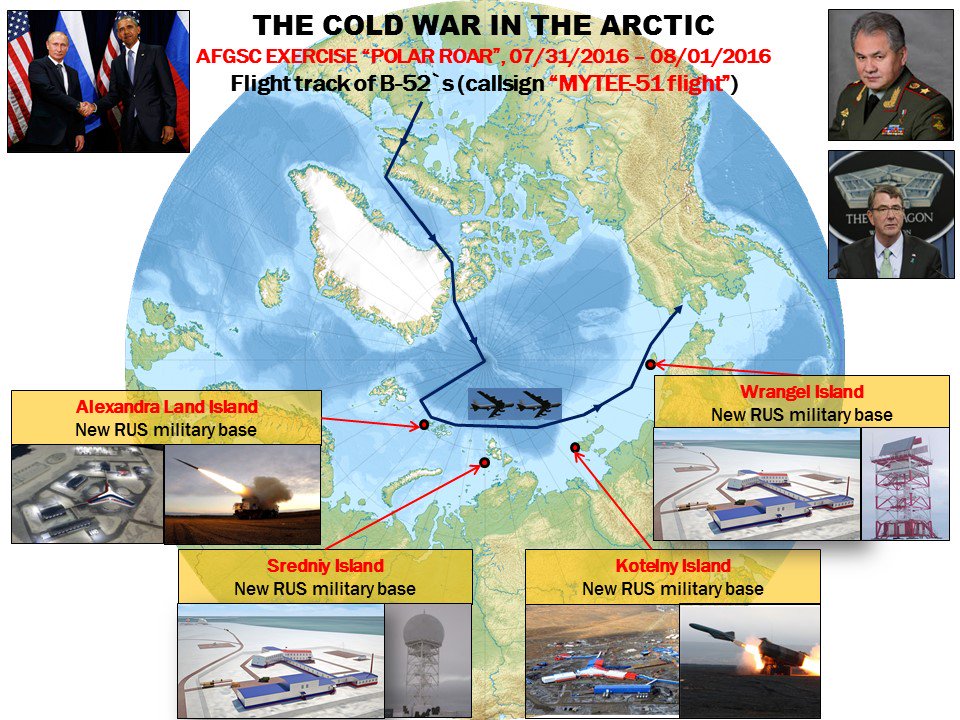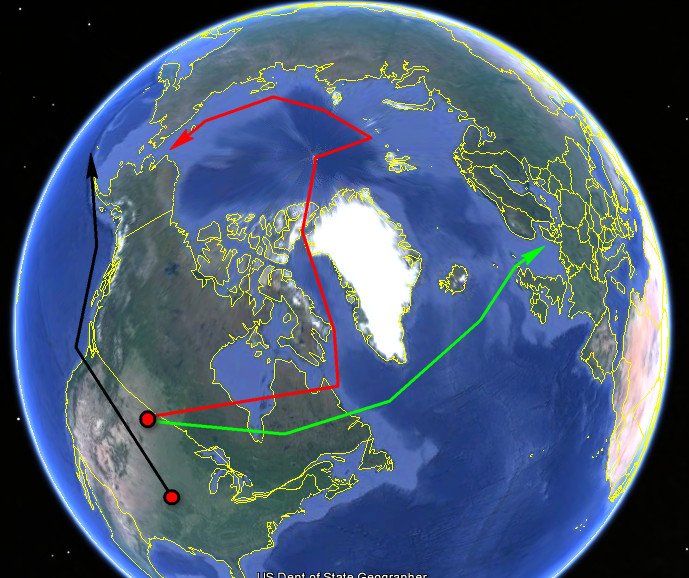Hear Me ROAR
(no votes) |
(0 votes) |
Research Fellow at the Primakov Institute of World Economy and International Relations under the Russian Academy of Sciences
On July 31 – August 1, US Strategic Command conducted a demonstrative military exercise, POLAR ROAR. As part of the mission, American bombers left their continental US bases to fly over the North Pole and along the Russian border.
During the Cold War, extra-long-range bomber flights were a norm and even routine, yet over the last quarter century, they’ve become quite rare and are frequently linked with the current political situation. Foreign media harp on the fact that Russia’s long-range aviation has recently began its long-range training flights again. Most often, Russians fly to the coast of Great Britain, to the US western coast and to Alaska. As an example of a link between military exercises and, note a 2014 “coincidence” when in September, Ukrainian President Poroshenko spoke in Canada’s Parliament, and Russia’s TU-9MS flew within 75 kilometers of the Canadian coast.

United States Department of Defense
McConnell KC-135s refuel B-52s in Polar Roar, July, 31, 2016.
In recent years, against the background of escalating tensions between Russia and the West, the US Air Force Global Strike Command became far more active near the Russian coast, when it had previously been focused on the Middle East and on “power plays” in the Pacific near China’s borders. Now, the same US Air Force B-52H Stratofortress bombers are taking part in the NATO military exercises in the Baltic Region, dropping inert weapons and laying mines at sea. When holding joint military exercises, they were often based on Great Britain’s airfields, but the US Air Force loves to demonstrate its ability “to work about the globe.” For instance, in late May 2016, two B-52Hs performed a 35-hour-long non-stop flight from Louisiana to Jordan and back to drop bombs as part of a joint American-Jordanian military exercise, Eager Lion.
Last week, America settled on an in-your-face show of their long arm that could reach Russian borders as well, and held a demonstrative military exercise, POLAR ROAR. Several factors came together here, among them a certain tension in Russian-American relations, where the American administration is often criticized for being weak. Also contributing was the growing struggle over the Arctic, as well as purely internal issues of the US Air Force.

Flight track of B-52's
Among those issues are the heated debates concerning full-fledged financing for developing a prospective air-launched cruise missile (Long-Range Stand-Off) which B-52H bombers would carry instead of the AGM-86B, manufactured in the early 1980s. Despite an objective need for a new cruise missile (at least the Air Force considers this need objective), its development program is plagued with criticism both from the supporters of reducing nuclear weapons, and from those in power and those experts who recommend concentrating on the US strong suit, the naval component of its nuclear triad. Besides the desire to save money, the criticism is aimed at the efficiency of air-launched cruise missiles.
Against this background, it comes as a small surprise that the officially declared goal of the POLAR ROAR “strategic deterrence exercise” was to demonstrate “the ability of the US bomber force to provide a flexible and vigilant long-range global-strike capability.” Five bombers took part in the approximately 24-hour-long operation: three missile-carrying B-52Hs and two “stealth” B-2A Spirits from three Air Force bases in the continental US. In their flight, the bombers were escorted by a large number of tankers, and fighters from NATO countries and from allied Sweden (another question concerning Sweden’s strict neutrality) were airborne covering their flight (at least the B-52Hs).

Flight track of B-52's
Two of the B-52Hs’ route laid along the Northeast Passage, the third flew toward the Baltic Region, and the B-2As possibly flew to the Far East. In order to observe Russia’s reaction, three RC-135 reconnaissance aircraft flew toward the Baltic Region and Far East simultaneously. However, despite the widespread practice of intercepting and escorting western aircraft, this time, the Russian Air Force apparently preferred not to reveal their protocols for massive alerts, especially with such a large number of witnesses. At least, there was no information about Russian fighters escorting American bombers, even though mutual grievances concerning “dangerous provocations in the air” are a regular occurrence.
Still, it is doubtful that the Russian military would leave this highly publicized visit from the US Air Force Global Strike Command unrequited: one should always pay their debts.
(no votes) |
(0 votes) |




